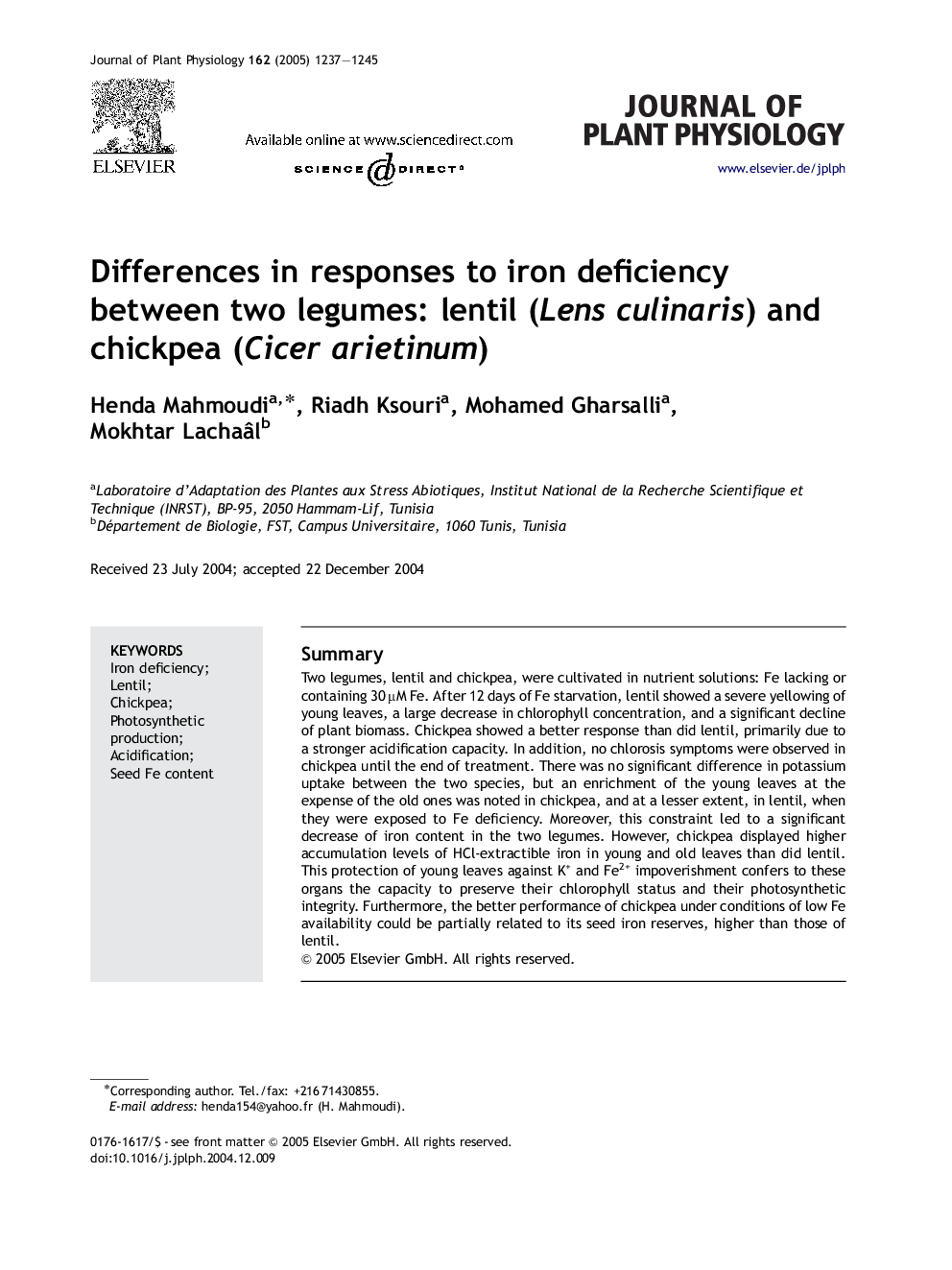| Article ID | Journal | Published Year | Pages | File Type |
|---|---|---|---|---|
| 10876939 | Journal of Plant Physiology | 2005 | 9 Pages |
Abstract
Two legumes, lentil and chickpea, were cultivated in nutrient solutions: Fe lacking or containing 30 μM Fe. After 12 days of Fe starvation, lentil showed a severe yellowing of young leaves, a large decrease in chlorophyll concentration, and a significant decline of plant biomass. Chickpea showed a better response than did lentil, primarily due to a stronger acidification capacity. In addition, no chlorosis symptoms were observed in chickpea until the end of treatment. There was no significant difference in potassium uptake between the two species, but an enrichment of the young leaves at the expense of the old ones was noted in chickpea, and at a lesser extent, in lentil, when they were exposed to Fe deficiency. Moreover, this constraint led to a significant decrease of iron content in the two legumes. However, chickpea displayed higher accumulation levels of HCl-extractible iron in young and old leaves than did lentil. This protection of young leaves against K+ and Fe2+ impoverishment confers to these organs the capacity to preserve their chlorophyll status and their photosynthetic integrity. Furthermore, the better performance of chickpea under conditions of low Fe availability could be partially related to its seed iron reserves, higher than those of lentil.
Related Topics
Life Sciences
Agricultural and Biological Sciences
Agronomy and Crop Science
Authors
Henda Mahmoudi, Riadh Ksouri, Mohamed Gharsalli, Mokhtar Lachaâl,
